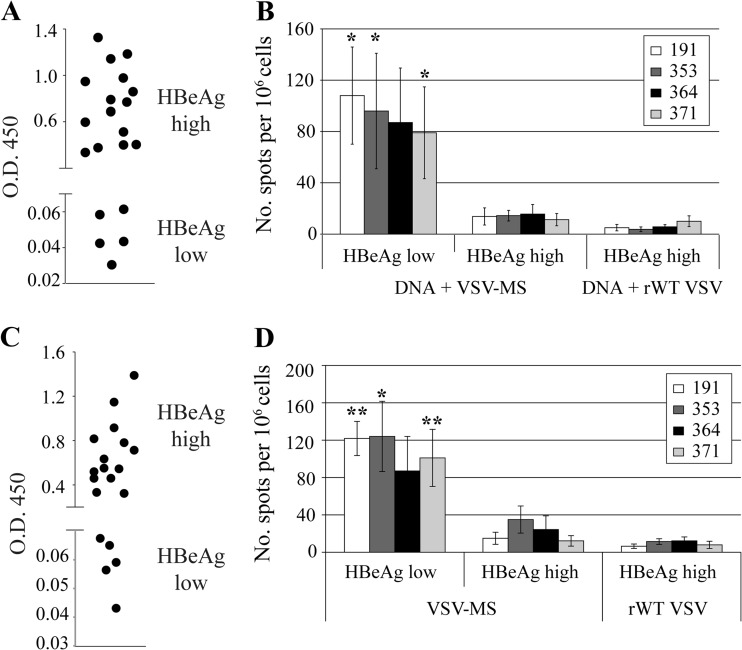Fig 1.
HBV-specific CD8 T cell responses are elicited following intranasal immunization with VSV-MS. (A) HBV 1.3 transgenic mice (n = 21) were screened for HBeAg expression and separated into HBeAghigh (n = 16) or HBeAglow (n = 5) immunization groups. (B) Mice were primed with 50 μg pCMV-S2/S plasmid DNA intramuscularly and 3 weeks later were intranasally infected with 1 × 106 PFU VSV-MS (n = 13) or rWT VSV (n = 8). Seven days postboost, splenocytes were harvested and analyzed using an IFN-γ ELISPOT assay. The number of cells responding to stimulation is presented as a quantification of the number of spot-forming cells (SFC)/106 cells. (C) HBV 1.3 transgenic mice (n = 19) were again screened for HBeAg expression and separated into HBeAghigh (n = 14) or HBeAglow (n = 5) immunization groups. (D) Mice were intranasally infected with 1 × 106 PFU VSV-MS (n = 12) or rWT VSV (n = 7). Seven days postimmunization, splenocytes were harvested and analyzed as in panel B. The number of SFC/106 cells is significantly (by Student's t test) higher following stimulation with the indicated peptides (**, <0.001; *, <0.05) in the HBeAglow mice than in the HBeAghigh mice. All values presented are the averages of each group, and error bars show the standard errors of the mean.

